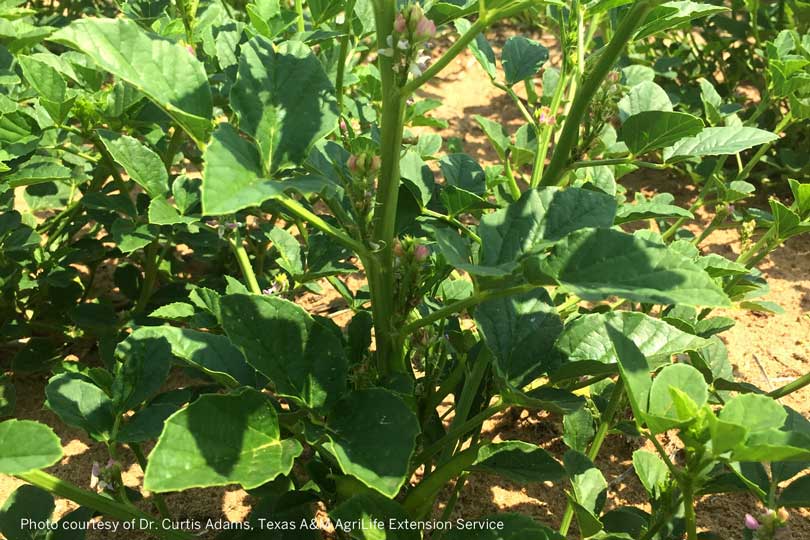By Justin Walker
Communications Specialist
Scientists from Texas A&M AgriLife and the University of Florida are teaming up to increase and stabilize guar production in the United States.
The research team is attempting to integrate guar into existing wheat fields in the Southern Plains.
Guar contains galactomannan gum within its seed, which is used in many food and industrial applications.
“Most people don’t know it, but guar affects our lives every day,” Dr. Curtis Adams, Texas A&M AgriLife Research crop physiologist, said in an interview with AgriLife Today. “Guar gum is in many of the foods we eat. It’s in products we use in our homes. It’s used to extract oil and gas from the ground.”
The United States is the world’s largest consumer of guar, importing $1.1 billion worth in 2011, Adams said.
Guar is a legume, which means it can convert atmospheric nitrogen into fertilizer, he said. This has helped the crop adapt to semi-arid conditions in Texas. Relatively low water use has made it one of the most drought-tolerant crops.
“Introducing legumes, especially well-adapted legumes like guar, into our cropping systems provides a potential opportunity to improve soil nitrogen fertility and reproduce input costs,” Dr. Calvin Trostle, Texas A&M AgriLife Extension Service agronomist, said.
Adams noted the United States guar crop is unstable and accounts for a small amount of the world’s supply, despite high consumption rates.
“We believe this represents missed economic and environmental opportunities,” he said.
A majority of the U.S. guar is located in the Southern Great Plains region of Texas, but a variety of factors have limited acreage compared to the major crops.
“One reason U.S. guar production is low is that guar has typically not had the income potential of cotton, the dominant summer crop in this area,” Adams said. “A lack of crop insurance for guar is another reason, which may be attributed to the lack of development in the industry.”
It is typically grown in cotton systems in the United States, but usually only when cotton prices are low or as an emergency crop.
“We expect competition with cotton to be an ongoing barrier to guar production for producers,” Adams said. “But, wheat cropping systems, which are left fallow in the summer, may provide another venue for guar.”
Adams said data gathered by the team so far has indicated improved wheat productivity when the crop is planted immediately following guar, although rigorous testing has yet to be completed.
Trostle said previous studies on guar and wheat planting days, water use and other factors indicate the crops would work well in a combined cropping system.
The research is funded by the U.S. Department of Agriculture’s (USDA) “Sustainable Agroecosystems: Functions, Processes and Management” grant program.
“We hope this new USDA project will provide useful information on how and why guar should be integrated into wheat cropping systems, helping to boost and stabilize U.S. production of the crop,” Adams said.

